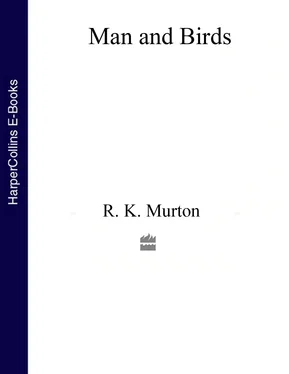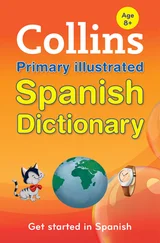The ancient Greeks and Egyptians had domesticated grey-lag geese, and according to the Odyssey , Penelope owned twenty. Aesop’s fable of the goose laying golden eggs symbolises the wealth enjoyed by these early farmers, by their counterparts the swan-owners of medieval England and the present-day turkey farmers. Furthermore, just as the modern broiler or battery industry is concerned with the most efficient conversion of vegetable food into protein, a fifth dynasty relief depicts captive geese being forcibly stuffed with food – perhaps these Egyptians were already enjoying pâté de foie gras. In Britain, domestic fowl were doubtless kept before the arrival of the Romans, but little information exists until 1578 when Bishop Leslie describes how the birds were caught in nets when moulting, to be pinioned and tamed; at this time the grey-lag was a common breeder in the English fens.
Evidence of the domestication of rock doves goes back to 4500 BC in ancient Iraq, and it is possible that neolithic man had learned how to breed the species in captivity. Early inhabitants of Britain farmed the doo-caves, erecting extra ledges to facilitate the collection of the young, which were then used immediately or reared for breeding. The Norman lords had their dove-cotes, and the practice flourished in rural communities. Domestic fowl, which were probably kept in India as early as 3200 BC, were also associated with religious and sacrificial functions. The evolution of both the rock dove and fowl (and as will be mentioned below the house sparrow too) likely occurred in close association with the emergence of man, making them in a sense pre-adapted to domestication. Indeed, it is conceivable that these species would not have evolved in the absence of man the pastoralist. Recent studies by Collias and Saichuae of the jungle fowl Gallus gallus , the ancestor of the domestic fowl, in Thailand and Malaya, show that it depends on the man-altered habitat produced as a consequence of the cut, slash and burn type of shifting native husbandry. The bird thrives in the secondary scrub eventually produced when man moves elsewhere, and it seems to be poorly adapted to virgin forest. Furthermore, the behavioural patterns of these jungle fowl are virtually identical with those exhibited by domestic strains so that years of selective breeding have achieved relatively little modification in the species-characteristic behaviour.
A painting on the tomb of Haremhab at Thebes in the days of Thothmes IV (1420–11 BC) shows how men kept pelicans in enclosures and collected their eggs for food. Iron Age Glastonbury was less sophisticated, although pelicans and various other birds were caught and eaten by the local inhabitants. We have no idea why the pelican (Dalmatian Pelican) became extinct in Britain between then and the Dark Ages, and if we blame hunting man we have to explain why another great delicacy – the crane – managed to survive until about 1590. Bearing in mind the considerable changes in bird distribution which resulted from the improvement in climate from the late nineteenth century to about 1950, we may hazard a guess that climatic fluctuations also caused important faunal changes in these early years. Pelicans were still nesting in western Europe in the estuaries of the Scheldt, Rhine and Elbe in Pliny’s time. The Dalmatian Pelican belongs to a group of birds which formerly lived on the edge of the Sarmatic inland sea which in Pleistocene times covered much of central Europe, and most of the typical members of this fauna are now relic species, (marbled duck, red-crested pochard, Mediterranean black-headed gull). The doom of these species could well have resulted mainly from the increasing desiccation which followed the wet Atlantic period; although there have been many ups and downs since, the process continues and the remaining strongholds of these birds are vanishing, as the lakes of the Asiatic steppes dry up.
One of these climatic fluctuations led, around 500 BC, to a much wetter period and probably gave an indirect boost to agriculture: Trow-Smith suggests that the resultant growth of scrub on the lighter cultivated soils forced the Celtic immigrants of the late Bronze Age to attend to the heavier lands, and stimulated the invention of the first early plough, the aratrum. Thus the irregular plots of neolithic farmers were replaced by straight furrows and the rectangular Celtic fields. Later, Belgic immigrants in about 75 BC brought the heavy plough caruca which resulted in the long Belgic strip cultivation, the precursor of the medieval system, and opened up land too intractable for the prehistoric plough. The Roman occupation extended the scope of agriculture but did little to improve techniques and it seems unlikely that these peoples did much to affect significantly our forest wild life. The population at this time was probably around a quarter million and very much concentrated in south-east England and East Anglia. The Romans, however, with their dykes and causeways did start the settlement of the Lincolnshire and Cambridgeshire fens. Land development was hindered by the arrival of the Anglo-Saxons, although they continued the drainage of marshes and used them as sheep pasturage. The process was in full swing between 1150 and 1300 and eventually led to the loss of the larger fenland species. The crane disappeared in about 1590, though the spoonbill hung on until 1667 on the Orwell at Trimley, Suffolk. Those other wetland birds, the bittern, Savi’s warbler and black tern, remained until the early nineteenth century (they have now returned following intensive conservation efforts).
The Anglo-Saxons and their medieval descendants were free to catch what birds they liked for food and their main problem was the best means to adopt. Some idea of these methods can be gleaned from the Colloquy of Ælfric , a tenth-century educational dialogue between master and pupil quoted by Gurney.
Magister: What say you, Auceps? How do you beguile birds?
Auceps : I beguile birds in many ways; sometimes with nets, sometimes with snares, sometimes with bird lime, sometimes with a call, sometimes with a bow, sometimes with a decoy.
With William the Conqueror came many of the inconsistencies which still dictate the relationships between birds and men. William introduced the special hunting forests where only the privileged could take the better game animals, and the harsh, unjust forest laws to enforce his ideals, foreshadowing the Game Act of 1831. With William we see the beginnings of those illogical attitudes which defined sport as the prerogative of gentlemen, as distinct from such plebeian pursuits as shooting sitting birds, which though much more humane, were associated with the illicit movements of the poacher or serf. Sport in Norman days included hawking, first introduced to England about AD 860, stag-hunting, hare-hunting and greyhound coursing; and the idea developed of game as animals worth eating and thus to be preserved. Deprived of hunting rights, the husbandman had to find other means for amusement, and cock-fighting provided one outlet. In ages when petty pilfering carried the death penalty and the sanctity of human life counted for little, this must have seemed an innocuous enough sport. Sir Gervase Markham (1638) gives a good account of cocking: ‘then you shall take his wings and spreading them forth by the length of the first feather of his rising wing clip the rest slipe wise with sharp points, that in his rising he may therewith endanger the eye of his adversary: then with a sharp knife you shall scape smooth and sharpen his spures.’ Cock tournaments did not become illegal until 1849, and even today occasional legal proceedings are reported against some mains in north-east England. Quite apart from the appeal of betting, cock-fighting attracted a big following of people roused by sado-masochistic impulses – just as today many watch wrestling and boxing matches who can hardly be all that interested in the arts of self defence. Even at the beginning of the nineteenth century, fashionable ladies could foregather at Hurlingham to watch the gentlemen shoot pigeons released from cages; today trap shooting is harmless because clay discs replace a bewildered bird.
Читать дальше












